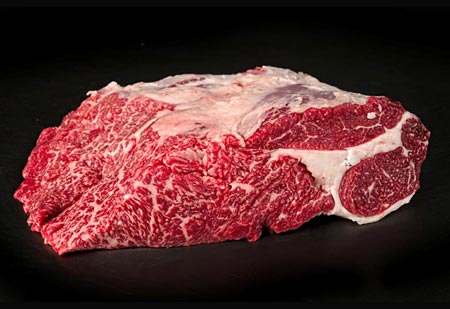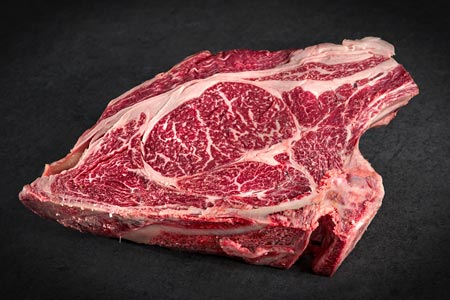Grades of Wagyu beef
A breed of Wagyu is considered to be exceptional where it produces meat of the highest quality. That meat is highly esteemed by consumers, despite its high cost.
 Its quality is top-of-the-line, like with pasturable sturgeon breeding. Just like that form of caviar farming, there are different quality grades of Wagyu beef, which are presented below for your information.
Its quality is top-of-the-line, like with pasturable sturgeon breeding. Just like that form of caviar farming, there are different quality grades of Wagyu beef, which are presented below for your information.
The quality of Wagyu beef is evaluated using a particularly strict Japanese grading system. The measurements are taken between the sixth and seventh ribs.
- First, there are five quality grades, based on the marbling, colour and texture of the meat, as well as the colour of the fat: 1 (Poor), 2 (Below Average), 3 (Average), 4 (Good) or 5 (Excellent).
- The meat’s yield is divided into the following grades: A (72% and above), B (69% and above, but under 72%) or C (under 69%).
- The BMS (Beef Marbling Score) specifically indicates the degree of marbling: 8-12 (Excellent), 5-7 (Good), 3-4 (Average), 2 (Below Average) or 1 (Poor).
- The colour and purity of Wagyu meat are rated on a scale from 1 to 7.
- The firmness of the meat is assessed visually, resulting in a score from 1 to 5..
Wagyu H grades:
Meat yield: A (72% and above),
BMS (Beef Marbling Score): 7 to 9
 Very good meat generally means an exquisite flavour and particularly high marbling. Marbled meat is extremely tender, rich and melts in the mouth, because the fat is evenly distributed throughout the muscle tissue. Although it is fatty, that doesn’t necessarily mean it is unhealthy. In fact, thanks to the presence of essential fatty acids, exceptional red meat is low in cholesterol. It should be noted that producing exceptional or high-grade meat is no easy feat. Wagyu farming conditions are usually quite remarkable: protein-rich feed, well-developed farmland, complete absence of stress, and grain fodder.
Very good meat generally means an exquisite flavour and particularly high marbling. Marbled meat is extremely tender, rich and melts in the mouth, because the fat is evenly distributed throughout the muscle tissue. Although it is fatty, that doesn’t necessarily mean it is unhealthy. In fact, thanks to the presence of essential fatty acids, exceptional red meat is low in cholesterol. It should be noted that producing exceptional or high-grade meat is no easy feat. Wagyu farming conditions are usually quite remarkable: protein-rich feed, well-developed farmland, complete absence of stress, and grain fodder.